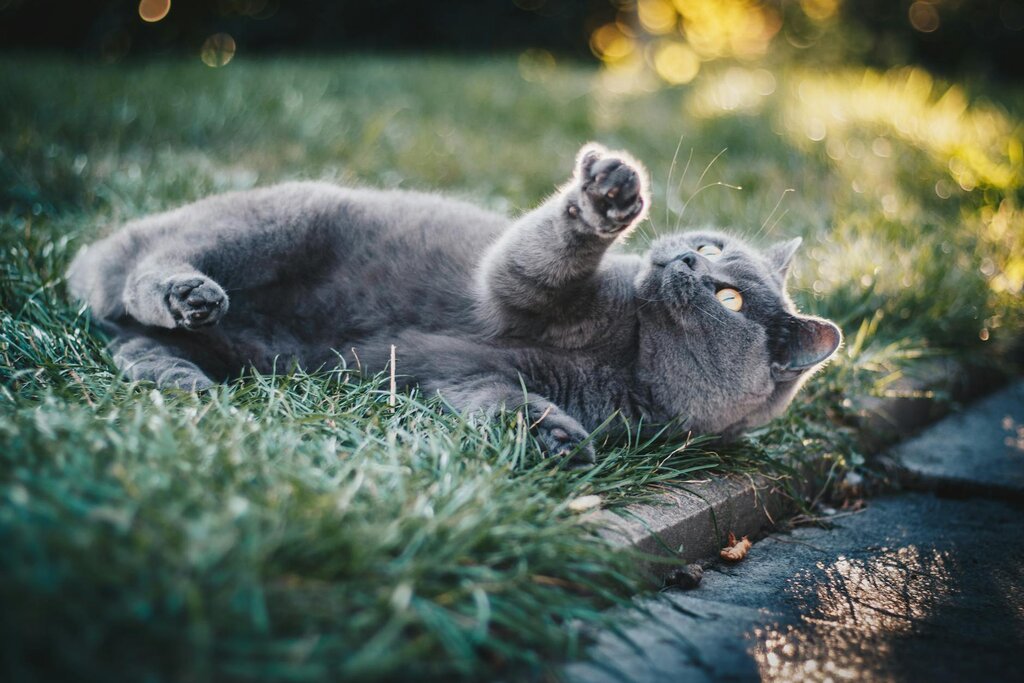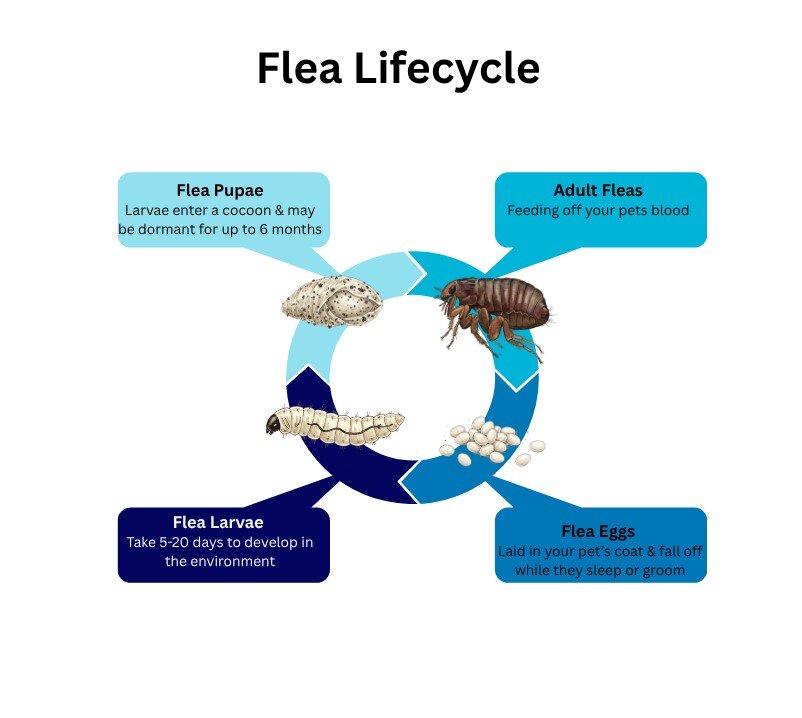Last Updated: 09/10/2025
How Do Cats Get Fleas?
In this article we outline the most common ways cats (both outdoor and indoor) acquire fleas how to tackle an infestation in your home and the best prevention methods so you can keep your cat or kitten flea-free.
Author: Dr Michelle Wong BVSc
Reading Time: 6 minutes - short read
Flea infestations are a common and uncomfortable issue that every cat owner dreads. The itching and discomfort are just the tip of the iceberg, as most of the flea lifecycle exists hidden within the furniture and carpets inside your house.
If you're scratching your head, wondering how your cat ended up with fleas, you're not alone. And what's worse, if you don't tackle the problem correctly, you risk perpetuating a cycle that can become a long-term issue for you and your pet. Fleas can also transmit diseases to your beloved pets; they may carry the flea tapeworm and transmit this parasite to your pets.
In this article we outline the most common ways cats (both outdoor and indoor) acquire fleas, how to tackle an infestation in your home and the best prevention methods so you can keep your cat or kitten flea-free.
Common ways cats get fleas

There are a number of ways that cats cat pick up fleas. Some common methods include:
- Humans as flea carriers: Owners can be accidental flea carriers especially if they enjoy spending time outdoors, frequently visiting parks and nature. Or even from the backyard. Fleas could jump onto clothing or shoes and hitch a ride all the time. For this reason, it is recommended that all cats, this includes those living indoors, are also treated with flea prevention.
- Other pets: Living with multiple pets can increase the risk of fleas being brought inside the house, particularly when the other pets spend periods of time outdoors. Fleas can be transferred into your home via your dogs. Friends and family who visit along with their pets could also be potential carriers. The more pets you have, the higher your chances of introducing fleas inside the house. The best method of protection is to treat each pet against fleas to reduce the risk of a flea infestation.
- Places cats visit: Your cat may visit the vet clinic once a year for their annual health check and vaccination, but these short and infrequent trips could expose your cat to fleas. Vet clinics are busy places with lots of animals coming in and out, which increases the chance of fleas jumping onto your cat. Boarding facilities and pet groomers are also places for potential flea exposure. If your cat needs to stay at a cattery over the holidays or they require a haircut at the pet grooming centre, make sure they are well protected on flea coverage before heading over.
- New homes and furniture: Moving into a new apartment or house can potentially pose a risk as fleas can survive in the environment for a long period of time. In the pupal stages, fleas may remain inside a cocoon for 6 months until they sense a host nearby. Previous tenants or owners could have owned pets who brought fleas inside and therefore, fleas may be a concern for the new resident. Be careful of second-hand items as used furniture, carpets or bedding can also harbour these annoying hidden threats. As there can be a number of ways in which fleas can enter your home, it is not impossible for cats living exclusively indoors to get fleas. The presence of rodents and wildlife passing by open windows could also allow fleas to penetrate the screen and jump onto your cat.
Looking for more information? Read our article on how indoor cats can have fleas
The flea lifecycle: Why it's important
Understanding the flea lifecycle can help to ensure effective control in your home.
Did you know that 95% of the flea lifecycle actually occurs off your pet? This means there is only 5% of adult fleas visible to our human eyes. Adult fleas will live on their host, feeding on blood and laying eggs in the hair. These eggs will drop off on bedding or sofa, where your pet sits or sleeps. When the conditions are right, the eggs will hatch and out comes the flea larvae. The larvae will burrow deep into fabrics, in your pets bed and under carpets, avoiding light. As they grow, they eventually form a cocoon to enter the pupal stage which is the last stage before becoming an adult flea.
Adult fleas can comfortably remain in their cocoon until they sense a potential host nearby. It is possible for them to remain dormant for up to 6 months! Fleas are able to sense vibrations, body heat and movement. These are the triggers for an adult flea to emerge and they will be ready to feed immediately. This particular trait of the flea is the reason why it is possible to have flea problems after moving into a house that has been unoccupied for some time.

Best practice for flea prevention

It's not always easy to spot fleas moving around in your pet's coat, and cats who regularly groom themselves can make this more difficult. The most effective way to prevent a flea problem is to administer regular, ongoing protection. There are many long-lasting spot-on treatments available which could last 1-3 months depending on the product. Many also include worming prevention as well making it extremely convenient and easy to use.
Treatments available for cats
All in one spot-on treatments are most popular with cat owners, which is not surprising given that many kitties are notoriously difficult to administer tablets to! There are a variety of options for cats with many offering monthly prevention such as Revolution or Advocate. If ticks are a concern in your area, and your cat spends time outdoors, consider treatments like Nexgard Spectra or Bravecto which include tick protection.
Apart from spot-on preventatives, there are also flea collars or tablets available. It is however, important to take into consideration which of the flea lifestages each product may be effective for.
Take Capstar tablets for example, these are very beneficial to use when it is necessary to remove adult fleas quickly. This medication works fast and kills within half an hour. However, these tablets are not long lasting nor do they affect immature lifestages of the flea. In many cases, it is best to have a multimodal approach to thoroughly remove a flea infestation of your home.
Top recommended flea treatments for cats
Tackling fleas in the home
A home overrun with fleas is a nasty business, and naturally we want them out as soon as possible.
There are a number of steps you can take to thoroughly eliminate the fleas from your house, and keep them out:
Articles recommended for you
Our vet authored guide to the benefits of feeding your dog fresh food plus tips and advice for introducing it into their regular menu.
See our guide to protecting your pet from parasites from our vet team.
Thinking of getting a fish? Check out our guide for setting up a tank and home care tips!
Looking to understand horse feeds better? This comprehensive guide covers feeding recommendations for horses of all ages and disciplines.
Does your pet suffer from anxiety? Check out our Vet-guide for treatment options to help your pet.

